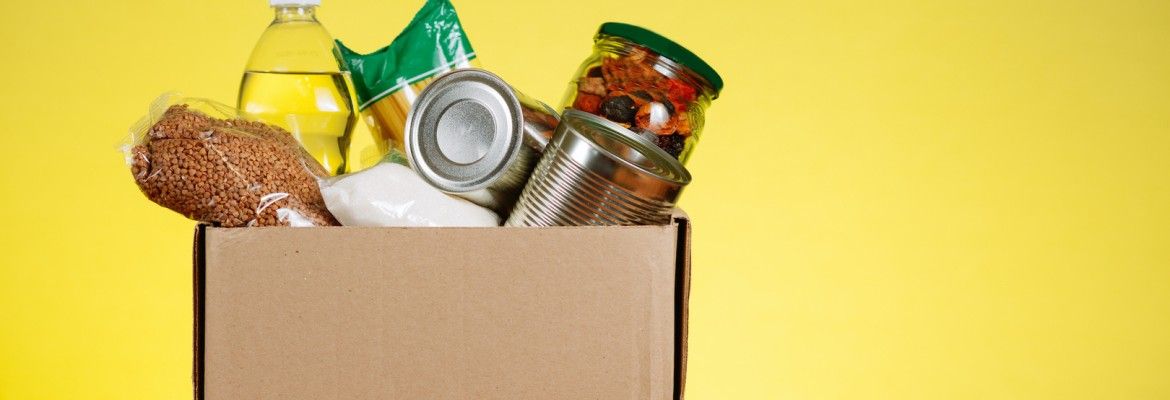
Less risk, more safety: The BfR recommendations for food contact materials
Food comes into contact with many materials from production to consumption.
Substances that are hazardous to health can be transferred to the food in the process.
The Food Act and BfR recommendations ensure consumer protection.
Foods are sensitive goods and susceptible to various external influences. In order for consumers to be able to enjoy food without worries, protective packaging is necessary in many cases. Since these are materials for food contact, they must meet strict specifications – and the Federal Institute for Risk Assessment (BfR) makes its recommendations in this regard.
WHAT ARE FOOD CONTACT MATERIALS?
Food comes into contact with numerous objects and materials during production, transport, storage and consumption. These can be machines, but also packaging, crockery and cutlery. These are referred to as food contact articles and materials if they are actually suitable for coming into contact with food.
With each of these contacts, substances can pass from the materials touched to the food – in technical terminology, this is referred to as migration. Substances that are hazardous to health can also migrate and contaminate the food.
A classic example from the packaging industry is printing ink that penetrates the packaging material and thus gets onto the contents. In addition, substances can migrate through evaporation. If, for example, frozen food including the packaging tray is heated in a microwave or an oven, substances can dissolve and get onto the food.
THE LAW IS THE LAW: REGULATIONS FOR FOOD CONTACT MATERIALS
In order to ensure that food packaging and other contact materials do not pose any risks to human health, the Foodstuffs Act (Section 31 (2) sentence 1 LFGB) stipulates that no substances may be transferred from food contact materials to foodstuffs that
pose a risk to human health,
bring about an unacceptable change in the composition of the food or
- affect the smell, taste, texture and appearance of the food.
In principle, however, not every substance that migrates is a health risk. There are so-called ubiquitous substances that typically occur everywhere in nature, as well as many substances that are only considered critical above a certain threshold.
Toxicological tests provide information on whether and above which threshold a substance is of concern. These are carried out by organisations such as the European Food Safety Authority (EFSA) and the German Federal Institute for Risk Assessment (BfR).
ON THE TEST BENCH: AT THE FEDERAL INSTITUTE FOR RISK ASSESSMENT (BFR)
The Federal Institute for Risk Assessment has existed in its present form since 2002. Just like its predecessor institutions, the BfR primarily fulfils an advisory function for the federal government ministries. Cooperation is particularly close with the Ministries for:
- Food and agriculture
- Environment, nature conservation and nuclear safety
- Transport and digital infrastructure
- Health
The main task of the BfR in this context is totake a position on the risks of food, products and chemicalsand thus to provide acompetent knowledge base for political decision-makers.
A task that the BfR fulfils through independent research and assessments as well as by communicating health risks. The focus of its activities, as enshrined in the BfR mission statement, is tostrengthen consumer protectionand human health through safe food packaging.
.jpeg)
BFR RECOMMENDATIONS: THE LEGAL STATUS
The recommendations issued by the BfR on food contact materials do not constitute legal standards and thus have no binding legal character. Companies that produce and use such materials should nevertheless take the BfR's recommendations into account. This is because the legal situation stipulates that food contact materials must be produced in accordance with good manufacturing practice in such a way that they do not pose a health risk during normal and foreseeable usage.
The recommendations of the BfR represent the current state of science and technology for the conditions that are decisive for whether a material meets the legal requirements with regard to its health safety.
This means: If a consumer product is produced or used in a way that deviates from the BfR recommendations, the manufacturer or user must expect complaints based on food law regulations.
IN WHICH AREAS DOES THE BFR CONDUCT RESEARCH AND MAKE RECOMMENDATIONS?
.jpeg)
In its research, assessment and advisory activities, the Federal Institute for Risk Assessment is fundamentally dedicated to all questions from the following three subject areas:
Food safety: The toxicological, nutritional and medical evaluation of food. Research topics are ingredients, additives, residues, contaminants and germs.
Chemical safety: The health risk assessment of chemicals, pesticides, biocidal products and various dangerous goods.
Product safety: The risk assessment of consumer-related products such as cosmetics and hygiene products, toys, clothing and detergents and cleaning agents. Containers and packaging for food also fall into this area.
However, the BfR's activities are limited exclusively to substances and areas that are not yet regulated by legislation. Current developments in legislation are therefore responded to by regularly updating the recommendations - the lists of all applicable recommendations can be viewed free of charge in the BfR online database.
ANOTHER AREA OF RESEARCH: MATERIALS FOR FOOD CONTACT
Basically, the BfR is only concerned with the so-called high polymers. These are a group of chemical substances that consist of macromolecules. These include both natural and synthetic substances such as:
Plastics,
silicones,
natural and synthetic rubber as well as
papers, cardboard and paperboard.
Originally, the focus of the BfR recommendations was on plastics for food contact. However, this area is now largely regulated by legislation at EU level.
The recommendations of the BfR regarding these plastics therefore now only concern those substances that are not included on the positive list of Regulation (EU) 10/2011: Polymerisation aids and auxiliary substances in the production of plastics.
The situation is different with regard to silicones, rubber and paper. Here, companies can still fully rely on the recommendations of the BfR.
IN FOCUS: RECOMMENDATIONS ON PAPERS, CARTONS AND CARDBOARD FOR FOOD CONTACT
One of the BfR's research focuses of particular relevance to the packaging industry is on paper, cardboard and paperboard for food contact. The BfR's recommendations serve as a guideline within the industry as to which substances may be used or should be avoided in production and processing procedures.
The BfR recommendations, therefore, list a range of substances together with their conditions and limit values - including the following categories:
Paper raw materials: fibres and fillers
Manufacturing aids: sizing agents, precipitating and fixing agents, parchmentising agents, retention agents, dewatering accelerators, dispersing and flotation agents, antifoaming agents, slime inhibitors and preservatives.
Special paper finishing agents: Wet-strengthening agents, humectants, colouring agents and optical brighteners as well as agents for surface finishing and coating.
.jpeg)
In addition, the BfR makes recommendations on the conditions under which the use of recycled fibres as paper raw materialis permissible.
In principle,recycled products have to meet the same requirementsas products made from virgin raw materials. However, there areadditional requirementsfor substances that may be present in the recovered paper used, for example as components of printing inks and adhesives.
During the recycling process, varioussubstances from other materials (e.g. plastics) can also migrate to the recycled fibres. In order to prevent further migration to food at a later stage, special care must therefore be taken when analysing recycled products. The BfR also provides a list of substances to be considered and their limit values.
These articles might also interest you:

Customised packaging
These are individually manufactured packages such as folding boxes, shipping cartons or laminate tubes. Thanks to the individual adaptation to the size, weight and nature of the packaged goods, space and money can be saved.

Digital print shop 4.0
The "Industry 4.0" strategy aims to merge the internet and new IT technologies with production technologies such as robotics and automation in order to reduce costs, save time and enable new, innovative products and services.

Creating the die-cutting contour correctly
To ensure smooth label printing, our pre-press team needs a die-cutting contour. Most of the time, this is already created directly by the customer, but it still happens from time to time that the die-cutting contour is missing.




